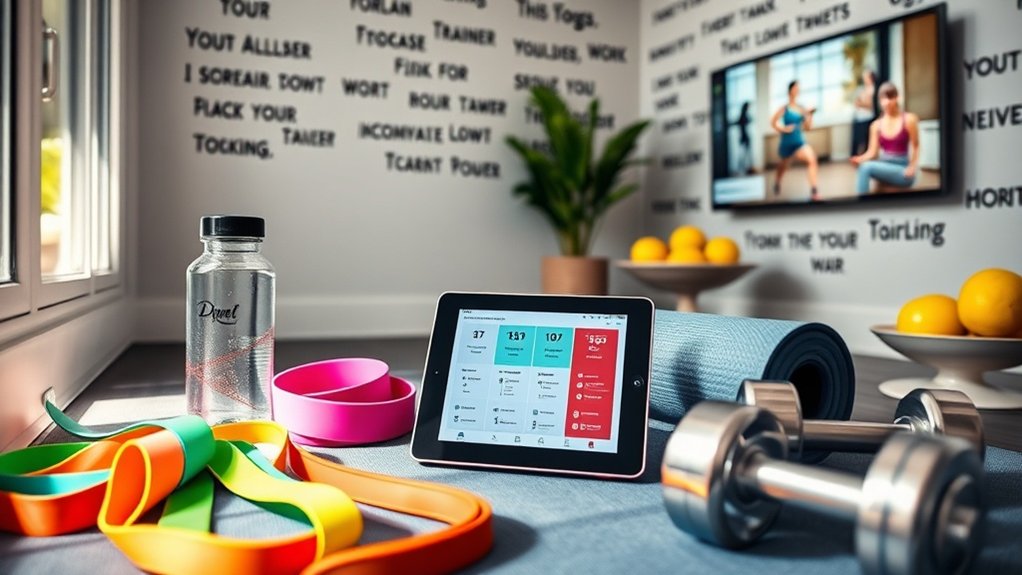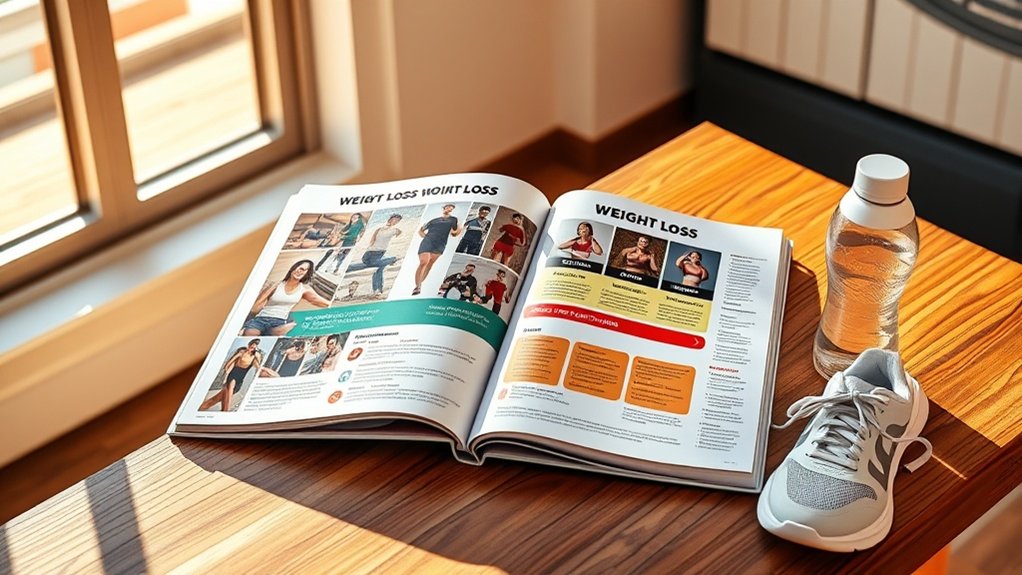Your first 30 days should focus on building sustainable habits with 3-4 weekly sessions targeting major muscle groups through bodyweight exercises. You’ll progressively add light weights by week two while prioritizing proper form over intensity. Expect delayed onset muscle soreness within 24-48 hours post-workout, but combat this with designated rest days and adequate protein intake. Set SMART goals aiming for 0.5-1% weekly body weight loss or 0.25-0.5% muscle gain. The following framework provides specific exercise progressions, recovery strategies, and assessment tools to guarantee safe, effective results.
Understanding Your Starting Point: Fitness Assessment and Goal Setting for Beginners

Before you select exercises or plan your first workout, you’ll need an honest assessment of where you stand today. Your fitness assessment should evaluate strength, endurance, flexibility, and body composition—these measurements create the foundation for your personalized workout plan.
Once you’ve established your current fitness level, focus on goal setting using the SMART framework: specific, measurable, attainable, relevant, and timely objectives that guide your progress.
Set realistic expectations from the start. Aim for 0.5-1% body weight loss weekly or 0.25-0.5% muscle gain.
Your beginner workout routine should target major muscle groups through fundamental movements, requiring at least 150 minutes of moderate exercise weekly. These specific goals transform vague intentions into actionable steps, confirming your first month builds sustainable habits rather than unsustainable intensity.
Week-by-Week Progression: Your Complete 30-Day Beginner Workout Calendar
While motivation peaks on day one, your body requires structured progression to transform initial enthusiasm into lasting results. This 30-day beginner workout calendar strategically builds your workout routine across four weeks.
Week one introduces full-body movements, establishing mastering form and technique as your foundation. You’ll perform 3-4 sessions targeting both upper body and lower body muscle groups through bodyweight exercises.
Week two increases frequency to 4-5 sessions, incorporating light weights while maintaining proper form.
Weeks three and four progressively intensify your beginner workout plan, adding complexity to exercises that align with your fitness goals.
Each week includes designated rest days for recovery, preventing burnout and enabling muscle growth.
Track progress through fitness apps or journals, documenting strength gains and endurance improvements. This evidence-based progression guarantees sustainable advancement toward your fitness goals.
Mastering Fundamental Exercises: Form, Technique, and Safety Guidelines

Mastering proper form transforms beginner exercises from potentially harmful movements into powerful tools for sustainable fitness development. Following safety guidelines protects you from injuries while maximizing your workout effectiveness.
Essential Safety Guidelines for Fundamental Exercises:
- Warm up consistently – Dedicate 5-10 minutes to dynamic stretches before every session, preparing your muscles and joints for activity.
- Monitor your technique – Use mirrors or record yourself during weightlifting to maintain proper alignment and correct bad habits immediately.
- Prioritize core exercises – Include planks and glute bridges to build stability and balance, which supports correct mechanics throughout all movements.
- Practice listening to your body – Stop immediately when experiencing pain or discomfort, then reassess your form or consult a trainer.
Maintain an upright posture while engaging the core consistently, avoiding overexertion as you progress.
Building Consistency and Managing Early Challenges: Soreness, Fatigue, and Motivation
Although starting a workout routine brings excitement and determination, the first few weeks often present physical and mental obstacles that test your commitment.
You’ll likely experience delayed onset muscle soreness (DOMS) within 24-48 hours post-workout, signaling your muscles are adapting to new stressors.
Combat fatigue by scheduling rest days between sessions, allowing proper recovery. Maintain hydration and consume a balanced diet rich in proteins to support muscle repair and energy levels.
Strengthen motivation through achievable goals that build positive habits gradually. Consider finding a workout partner to boost accountability and improve workout attendance.
Remember, soreness indicates progress, not damage. Prioritize consistency over intensity during these initial weeks.
Your body needs time to adapt, and sustainable habits emerge from patience and strategic recovery management rather than pushing through exhaustion.
Tracking Progress and Transitioning Beyond Your First Month

After completing your first month of consistent training, you’ll need structured methods to measure improvements and adjust your program accordingly. A workout journal becomes essential for tracking progress—record weights lifted, repetitions, and durations to compare against previous sessions.
Beyond scale weight, monitor body composition changes including body fat percentage and muscle gain for a complete picture of your overall fitness transformation.
To maintain motivation and continue progressing, implement these strategies:
- Establish new SMART goals that align with your evolving capabilities
- Conduct fitness assessments every four weeks, including strength tests and timed runs
- Gradually increase intensity by adding new exercises or heavier weights
- Adjust rest periods and workout complexity to challenge your adapting body
These systematic approaches guarantee continued development while maintaining safety and sustainable progress.
Frequently Asked Questions
Is a 30 Day Workout Plan Safe for Beginners?
Yes, it’s safe when you follow safety guidelines and beginner precautions. You’ll need gradual progression, rest days, and proper workout intensity that respects your physical limitations. Prioritize injury prevention, nutrition basics, mental readiness, and realistic fitness goals throughout.
What Is the 3-3-3 Rule for Workout?
You’ll follow three workout types (strength training, cardio sessions, flexibility), complete three sets per exercise, and train three times weekly. This 3-3-3 benefits approach balances workout frequency, exercise intensity, and recovery importance while building fitness consistency through progressive methodology.
What Is the 5 5 5 30 Method?
You’ll complete five sets of five reps across five exercises within 30 minutes. This method delivers 5 5 5 30 benefits through efficient strength-building while 5 5 5 30 targets major muscle groups, making sure you’re progressively overloading safely for measurable results.
How to Create a Personalized Fitness Plan for Beginners?
Picture a medieval quest map: you’ll chart fitness goals, balance strength training with cardio options, schedule rest days, establish warm-up routines, track progress, prioritize injury prevention, maintain workout motivation through exercise variety, and integrate nutrition tips for sustainable success.



